Get the Most Out of Google Adwords Income Targeting

Google may not be able to gather quite as many data points about their audiences as Facebook, but they’re making the right moves in that direction.
Recently, they announced the addition of demographic targeting for search campaigns, which was previously available for display campaigns.
But even before this welcome addition, advertisers had the ability to target specific income brackets in the US on search, based on data that Google pulls directly from the IRS.
This often-overlooked feature may be buried under the “Locations” tab on Adwords can actually prove very valuable. Today, we’ll cover how to set up household income targeted campaigns, and some key ways to tell if income targeting will work for you.
We wrote about this way back in 2014, so if you need step-by-step directions to setting this up, head here:
https://tinuiti.com/blog/2014/07/adwords-targeting-by-household-income/
We decided to test income targeting with a jewelry client that specializes in high-end used watches–think Rolex–with an average order value (AOV) of 75k.
When breaking out location-targeted campaigns, our best practice at CPC has always been to bid at the state level and the U.S. overall. Then, we adjust the bids based on how those states perform.
You can imagine what a headache this could be when income targeting is involved–we’d have to implement those income tiers per geo, and there are six different income tiers:
Layer that with our usual full coverage across 50 states, and we would need to build out roughly 300 modifiers.
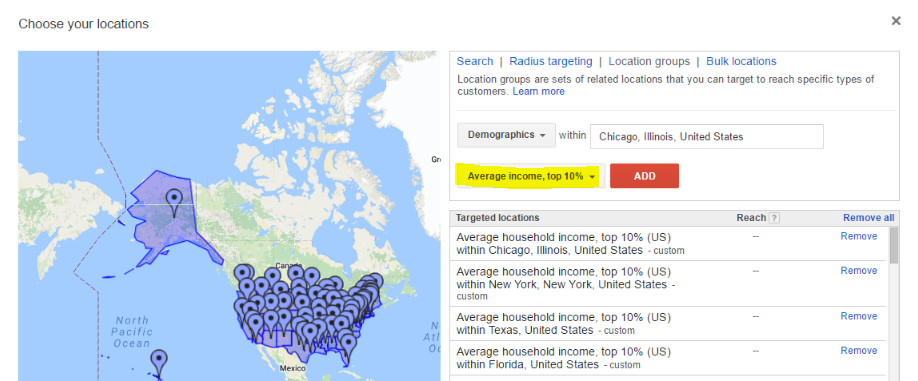
Not exactly easy to manage.
Alternately, we could break it out at the National level, but then we’d lose out on state-level optimizations.*
So we started by adding in income targeting in our shopping campaigns for only Los Angeles and Orange County since the client is based in Huntington Beach, California.
Not many conversions came from those two.
Next, we removed the state targeting but left U.S. targeting, just to make sure we filled in any gaps that may not include household income data (because that happens):
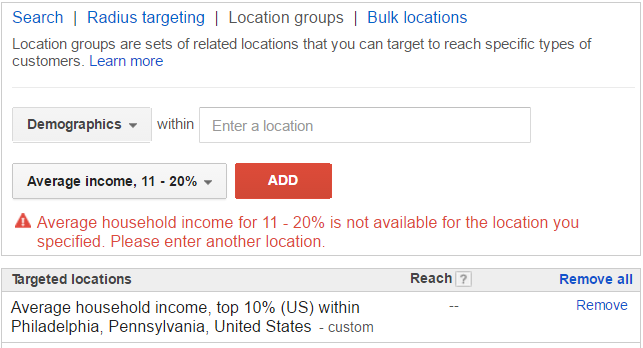
Here are the results from 9/01/16 – 10/01/16:

As you can see, the top 10 and the 11-20% income tiers have higher CTRs, conversion rates, and ROI across the board.
Even though we bid down on tiers below 50% by 25%, the lower income tier targets still wasting ad spend when compared to our $11 ROI target.
Since we sacrificed state-level bidding within AdWords, we wanted to see how performance within each state changed since the implementation.
Check out the state performance from Google paid traffic below. You’ll notice improvements in conversion rate, ROI, AOV, overall orders, and revenue.
Interestingly, our client’s top state is New York, and is actually down in sales despite an uptick in traffic:
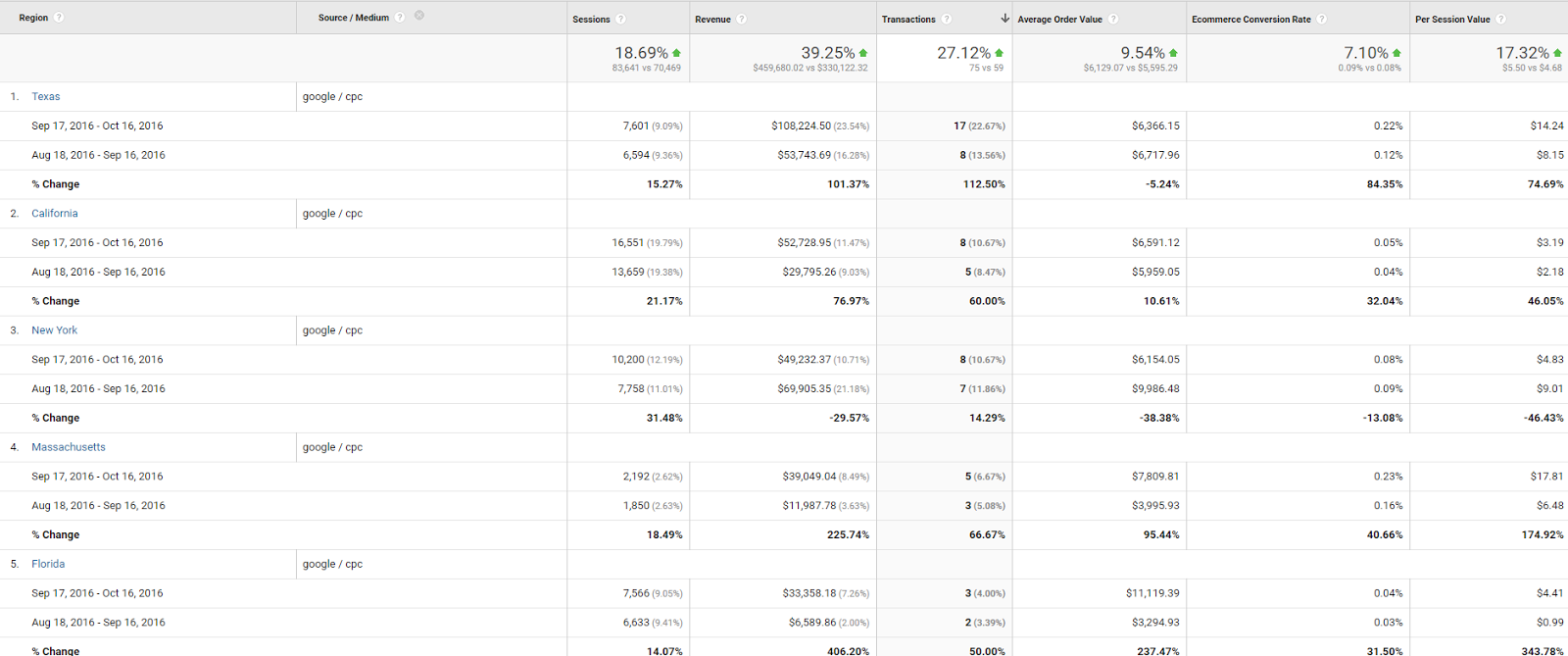
At the next phase, we decided to optimize these for specific key states–particularly New York.
In the end, the campaign structure that proved strongest for this client included:
Wondering if you can stack other bid modifiers with these?
Well, you can apply a mobile bid or target ROAS modifiers, but any other location target–such as “Places of Interest”–cannot be combined with income targeting.
It’s great to see what works for one of our clients–but how can you know if this will work for you?
Well first, it’s worth testing no matter what. As we stated before, you can download your previous settings and save them just in case it doesn’t work out.
You can get a pretty good idea of what audience converts most for you (generally) by looking in your Google Analytics account: Audience>Interests>In-Market Segments.
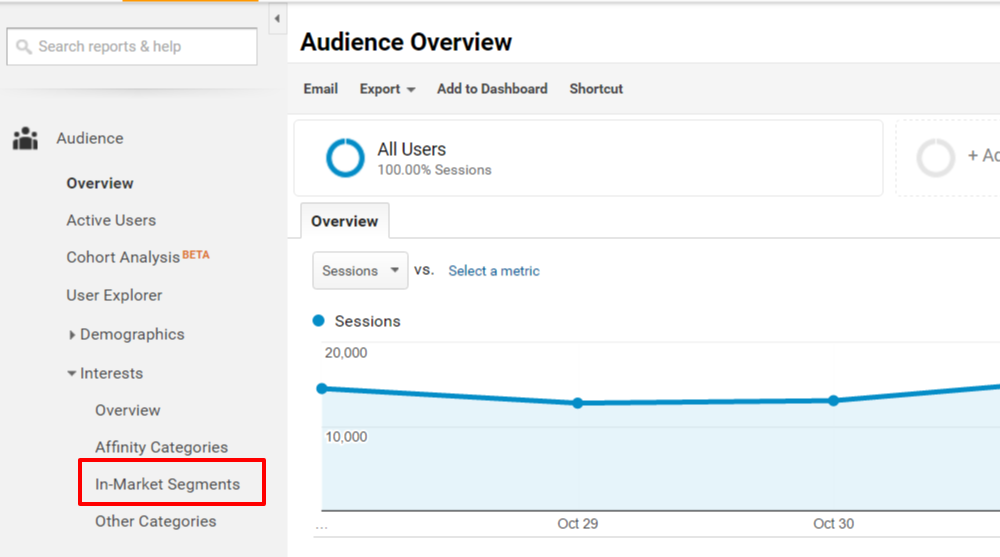
Here are the people (according to Google’s segments) that convert most for our watch client:
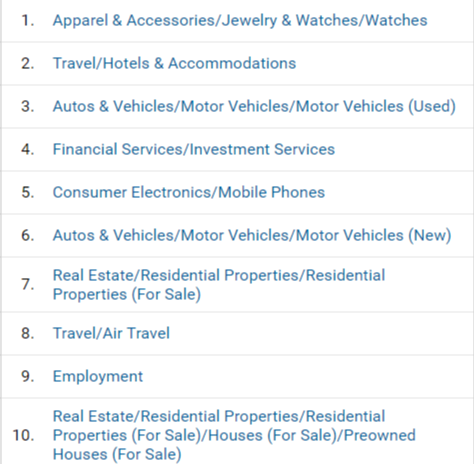
Not a huge surprise for Rolex buyers.
However, you’re not going to get all the information from the user in terms of what each of these groups can afford. That’s where location and income targeting fill a gap.

“If someone’s looking a “gold watch”, you don’t know if they’re willing to pay $100 for that gold watch or $10,000 for a gold watch,” says Roman Fitch, Retail Search Manager at CPC Strategy.
“But Google has data points to predict the searcher’s annual income. So when that person is searching for a “gold Rolex” and lives in a high-income ZIP like Beverly Hills, then I want to make sure I’m bidding aggressively for my Rolex watches to appear in the search results.”
On the flipside, if you’re Claires, you don’t want to spend a lot of money on clicks from high-end shoppers in NYC.
We don’t have a crystal ball for you, but we have pinpointed some things you should know before you start income targeting:
There are other ways to prequalify customers and reduce unwanted clicks from non-converters–for instance, using a high price point within your ad copy–but this is an effective way to ensure your ads get seen by those most likely to buy.
Fitch reiterates this point:
“Income-based targeting shouldn’t be looked at as a way to include or exclude people. It should be another way for us to prequalify potential customers based on income.”
*If you already have optimized bids at the state level and don’t want to lose them, you can always export those from the editor under the Keywords and targeting > Locations section, and save that file to re-upload later if these income segments don’t work out.
